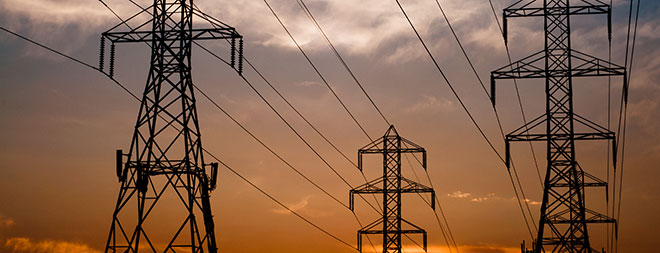
Efficiency is the Energy of the Future, and the Present (Op-Ed)

Peter Lehner is executive director of the Natural Resources Defense Council (NRDC). This piece is adapted from a post that appeared on the NRDC blog Switchboard. Lehner contributed this article to LiveScience's Expert Voices: Op-Ed & Insights.
Which energy source has had the biggest impact on meeting America's energy needs over the past forty years? It's not coal. It's not oil. Not wind or nuclear. Believe it or not, it's even bigger than all of those combined.
Our greatest energy resource is energy efficiency — wasting less, and making the most out of the energy we already have.
According to NRDC's groundbreaking, comprehensive analysis of key indicators, America's energy position, in terms of security and reliability, has never been stronger. That's reassuring, and perhaps surprising, in a time when bad energy news (turmoil in the Middle East, fracking, oil spills ) seems to dominate the headlines. For nearly 40 years, our economic growth has been rapidly outpacing our energy consumption. Our businesses and industries are producing and selling more stuff, and using less energy to do so. We used less energy last year than we did in 1999 — despite running an economy that's 25-percent bigger.
How have we accomplished this growth without an accompanying boom in energy demand, and a drastic uptick in carbon pollution?
In a word, efficiency.
Our home appliances and electronics have been meeting increasingly tough federal efficiency standards. Thanks to standards like those (which NRDC has been helping push through for decades), electricity consumption from 2000 onward has been growing slower than the population. Remarkable, when you consider not only how many more people are using electricity, but how many more gadgets Americans have at home now than we did at the turn of the century, how many more chargers are plugged into every wall socket.
Sign up for the Live Science daily newsletter now
Get the world’s most fascinating discoveries delivered straight to your inbox.
Refrigerators are bigger and fancier than ever, yet they use about one-quarter the energy they did 40 years ago, while the cost of owning and operating a fridge has fallen about 70 percent.
Americans using less oil now than we did in 1973, when the economy was one-third its present size. We're going farther than ever on each gallon of gas, thanks to federal fuel-efficiency standards. The latest set of standards are expected to cut oil use 2.1 million barrels by 2025. That's more oil than we import from any country in the Organization of the Petroleum Exporting Countries (OPEC).

Thanks to efficiency, Americans are already on track to meet President Barack Obama's target of a 17-percent reduction in carbon pollution by 2020. That's progress, but scientists agree we need to do more in order to stabilize the climate. We can get there if we really put efficiency to work — and studies show we have plenty of opportunity to do so.
President Obama made efficiency a cornerstone of his climate plan because he knows it works. The next big opportunity for energy efficiency is American homes and buildings, which are responsible for about one-third of U.S. global-warming emissions. Tightening building energy-codes and upgrading homes and buildings with better insulation, energy-efficient equipment and appliances will reduce energy waste, save money for owners and tenants, and bring down carbon pollution. A new, model, building energy code, jointly proposed by NRDC and several leading homebuilders, could cut home energy use up to 20 percent, and by 2030, reduce as much carbon pollution as 158 power plants produce in a year.
Federal and state governments can move things along faster by continuing to update efficiency standards for vehicles, buildings and appliances. But ironically, most utilities are penalized when they help their customers become more efficient, because electricity rates are set with a target revenue in mind. If customers use less electricity, utilities' revenues fall short. Regulators can fix this disincentive by allowing for small, yearly rate adjustments to correct for changes in sales, ensuring that utilities and customers who do the right thing aren't penalized. Half the states have measures like this in place for some utilities, but progress has been slow. And only two publicly owned utilities, in Los Angeles and Glendale, have made the change.
When Americans get more efficient, good things happen. Our existing efficiency efforts are already saving Americans hundreds of billions of dollars a year, creating hundreds of thousands of jobs, and reducing carbon pollution, all while costing far less than developing new sources of energy.
In contrast, continuing to burn coal and oil in our power plants and gas tanks costs the nation more than $100 billion each year in premature death and illness, hospital bills, work days lost and other health costs. That figure doesn't include the billions of dollars in damage from extreme weather, which is fueled by carbon pollution (and cost taxpayers nearly $100 billion in 2012), the national security costs of our oil addiction, and the harm done to ecosystems from power plant and vehicle pollution.
When it comes to energy, it makes sense to focus on what works. Energy efficiency should be our priority, not another checkbox on the list. It's the cleanest, most cost-effective, most productive energy resource Americans have, and we need to use more of it.
Lehner's most recent Op-Ed was "After 40 Years, Promise of Wilderness Protection Stands" This post is adapted from "Amazingly Good Energy News: U.S. Energy More Secure and Reliable than Ever, Thanks to Efficiency" on the NRDC blog Switchboard. The views expressed are those of the author and do not necessarily reflect the views of the publisher. This version of the article was originally published on LiveScience.










